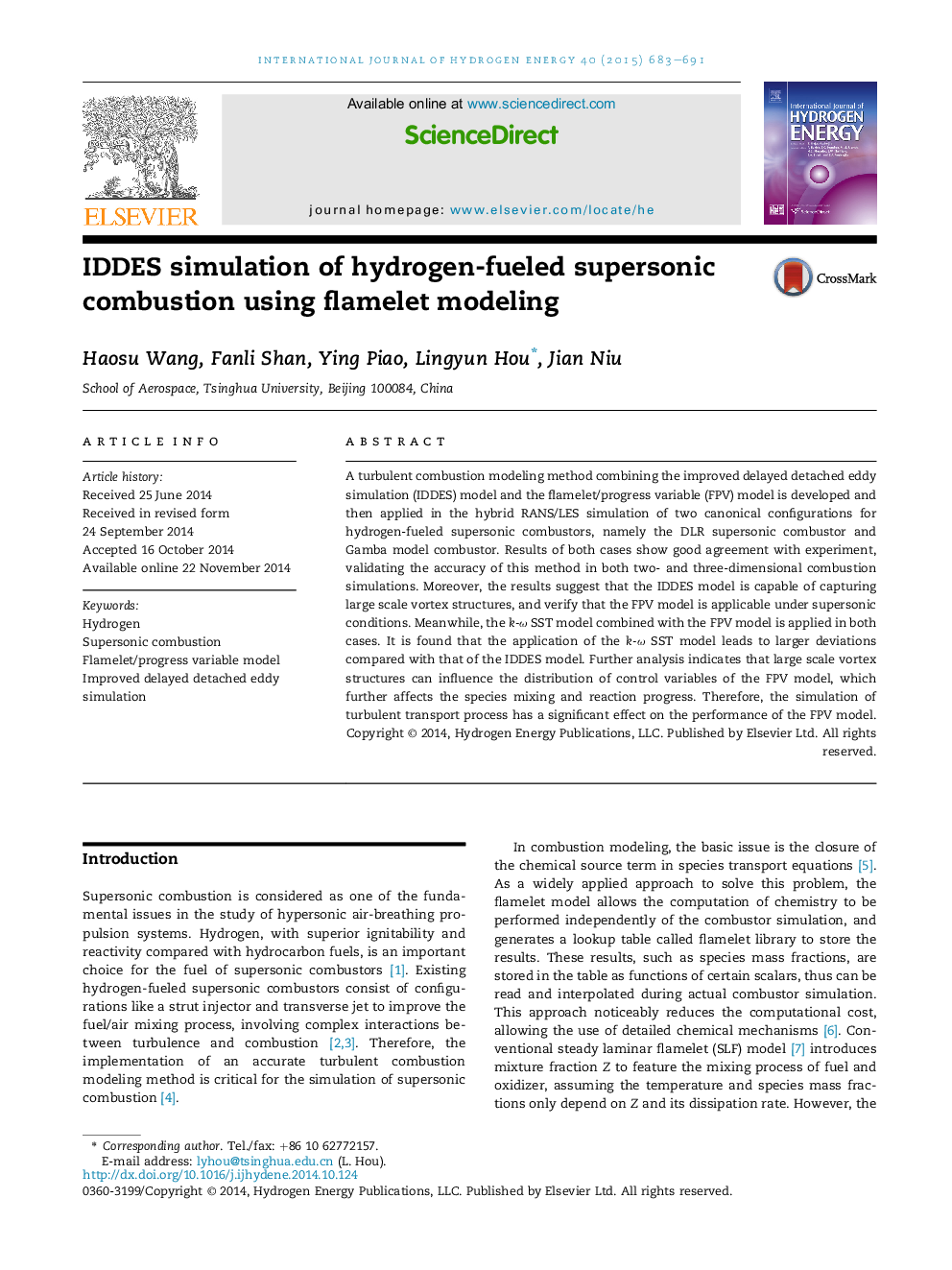| Article ID | Journal | Published Year | Pages | File Type |
|---|---|---|---|---|
| 7717354 | International Journal of Hydrogen Energy | 2015 | 9 Pages |
Abstract
A turbulent combustion modeling method combining the improved delayed detached eddy simulation (IDDES) model and the flamelet/progress variable (FPV) model is developed and then applied in the hybrid RANS/LES simulation of two canonical configurations for hydrogen-fueled supersonic combustors, namely the DLR supersonic combustor and Gamba model combustor. Results of both cases show good agreement with experiment, validating the accuracy of this method in both two- and three-dimensional combustion simulations. Moreover, the results suggest that the IDDES model is capable of capturing large scale vortex structures, and verify that the FPV model is applicable under supersonic conditions. Meanwhile, the k-Ï SST model combined with the FPV model is applied in both cases. It is found that the application of the k-Ï SST model leads to larger deviations compared with that of the IDDES model. Further analysis indicates that large scale vortex structures can influence the distribution of control variables of the FPV model, which further affects the species mixing and reaction progress. Therefore, the simulation of turbulent transport process has a significant effect on the performance of the FPV model.
Keywords
Related Topics
Physical Sciences and Engineering
Chemistry
Electrochemistry
Authors
Haosu Wang, Fanli Shan, Ying Piao, Lingyun Hou, Jian Niu,
